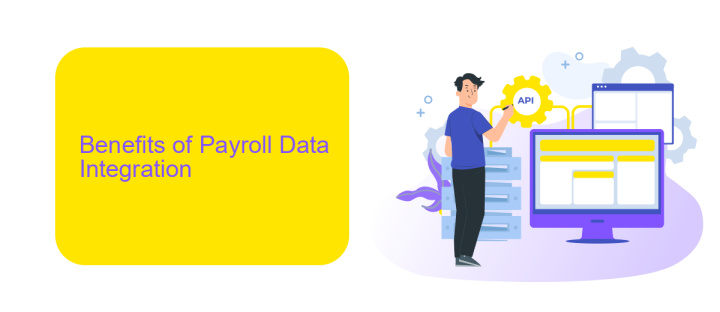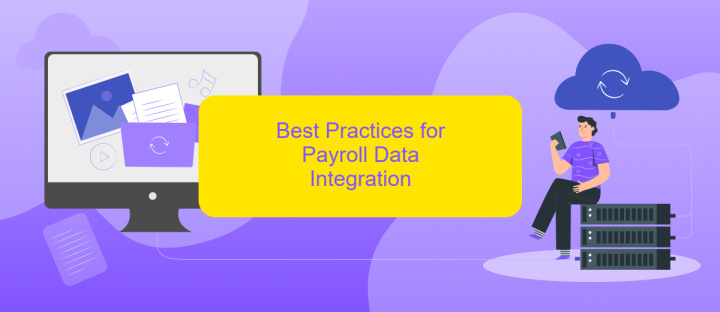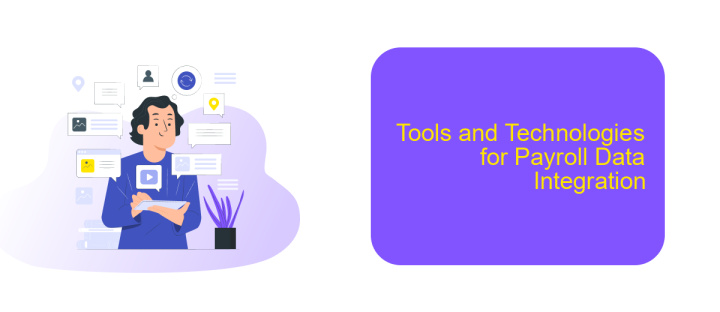Payroll Data Integration
Payroll data integration is a crucial process for modern businesses, ensuring seamless communication between payroll systems and other financial software. By automating data transfer, companies can reduce errors, save time, and maintain compliance with regulatory requirements. This article explores the benefits, challenges, and best practices for implementing effective payroll data integration in your organization.
Challenges of Payroll Data Integration
Integrating payroll data can be a complex and challenging task for any organization. The process involves synchronizing information from various sources, ensuring data accuracy, and maintaining compliance with regulations. One of the main hurdles is the compatibility of different systems and software, which often do not communicate seamlessly with each other.
- Data Inconsistency: Different systems may store data in varying formats, leading to discrepancies.
- Security Risks: Transferring sensitive payroll information poses significant security challenges.
- Compliance Issues: Ensuring that payroll data integration meets legal and regulatory standards is crucial.
- System Downtime: Integration processes can cause system outages, affecting business operations.
- Resource Intensive: Requires significant time and effort from IT and HR departments.
To address these challenges, leveraging integration platforms like ApiX-Drive can be beneficial. ApiX-Drive offers tools to automate and streamline the integration process, ensuring data consistency and security. By using such platforms, organizations can reduce the complexity of payroll data integration, minimize errors, and maintain compliance with ease.
Benefits of Payroll Data Integration

Integrating payroll data offers numerous benefits, streamlining administrative processes and enhancing overall efficiency. By consolidating payroll information into a unified system, businesses can significantly reduce the time and effort spent on manual data entry and error correction. This not only minimizes the risk of inaccuracies but also ensures compliance with legal and regulatory standards. Furthermore, integrated payroll data provides real-time insights, empowering management to make informed decisions regarding workforce management and financial planning.
One of the key advantages of payroll data integration is the seamless connectivity between various business systems. Services like ApiX-Drive facilitate this by offering automated data synchronization between payroll software and other enterprise applications. This eliminates the need for repetitive manual data transfers, thereby reducing the likelihood of errors and enhancing data accuracy. Additionally, such integration enables better tracking of employee performance and compensation, leading to improved transparency and employee satisfaction. Ultimately, payroll data integration contributes to a more organized and efficient business operation.
Best Practices for Payroll Data Integration

Integrating payroll data efficiently is crucial for maintaining accurate financial records and ensuring timely employee payments. By following best practices, organizations can streamline this process and minimize errors.
- Choose the Right Tools: Select reliable integration tools like ApiX-Drive to automate data transfer between systems.
- Data Mapping: Ensure that data fields in different systems align correctly to avoid mismatches and errors.
- Regular Audits: Conduct regular audits to verify the accuracy of integrated data and promptly address any discrepancies.
- Security Measures: Implement robust security protocols to protect sensitive payroll information during integration.
- Employee Training: Train your staff on the new integration processes and tools to ensure smooth operation and troubleshooting.
By adhering to these best practices, organizations can enhance the efficiency and accuracy of their payroll data integration. Utilizing tools like ApiX-Drive can further simplify the process, providing seamless and secure data transfer between different systems.
Tools and Technologies for Payroll Data Integration

Integrating payroll data can be a complex task that requires the right set of tools and technologies to ensure accuracy, security, and efficiency. The choice of tools depends on various factors such as the size of the organization, the complexity of payroll processes, and the specific needs of the business.
Modern payroll data integration often involves the use of cloud-based solutions, APIs, and middleware to streamline the process. These technologies facilitate real-time data transfer, reduce manual errors, and enhance data security.
- API Integration: APIs enable seamless data exchange between payroll systems and other business applications.
- Middleware Solutions: Middleware acts as a bridge to connect disparate systems and ensure smooth data flow.
- Cloud-Based Platforms: Cloud solutions offer scalability, flexibility, and remote access to payroll data.
- Data Mapping Tools: These tools help in transforming and mapping data from one format to another.
- Automation Services: Services like ApiX-Drive automate data integration, reducing the need for manual intervention.
By leveraging these tools and technologies, businesses can achieve more efficient and accurate payroll data integration. This not only saves time and resources but also ensures compliance with regulatory requirements.


Future Trends in Payroll Data Integration
The future of payroll data integration is poised to be revolutionized by advancements in artificial intelligence and machine learning. These technologies will enable more accurate and efficient processing of payroll data, reducing errors and enhancing compliance. Predictive analytics will also play a significant role, allowing businesses to forecast payroll expenses and make data-driven decisions. Additionally, blockchain technology is expected to provide a secure and transparent way to manage payroll transactions, ensuring data integrity and reducing the risk of fraud.
Another emerging trend is the increased use of integration platforms like ApiX-Drive, which simplify the process of connecting various payroll systems and applications. These platforms enable seamless data transfer and synchronization, reducing the need for manual data entry and minimizing the risk of errors. As businesses continue to adopt remote and hybrid work models, the demand for flexible and scalable payroll integration solutions will grow, making tools like ApiX-Drive indispensable for modern payroll management.
FAQ
What is Payroll Data Integration?
Why is Payroll Data Integration important?
What types of systems can be integrated with payroll software?
How can I automate my payroll data integration?
What are the benefits of using an integration platform for payroll data?
Time is the most valuable resource in today's business realities. By eliminating the routine from work processes, you will get more opportunities to implement the most daring plans and ideas. Choose – you can continue to waste time, money and nerves on inefficient solutions, or you can use ApiX-Drive, automating work processes and achieving results with minimal investment of money, effort and human resources.

